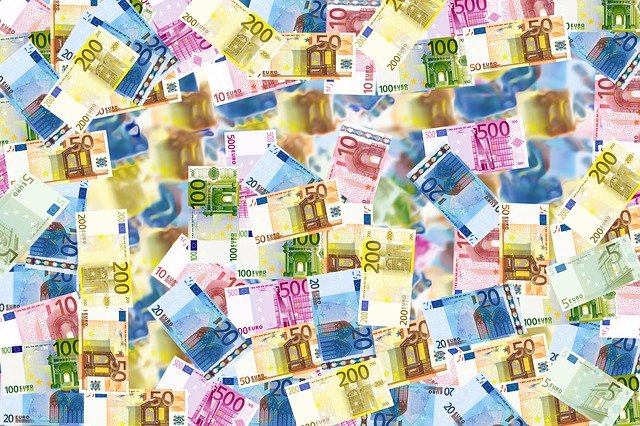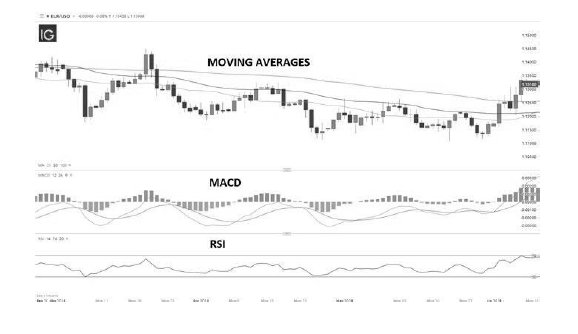|
Technical Analysis - Why Technical Analysis Is Beneficial to Traders
Technical analysis has become popular among dealers as a useful tool for managing risk, which can be a major barrier. Technical analysis is a flexible rational tool once a trader understands its principles and uses it on a variety of markets. Technical analysis seeks to identify patterns that can be usefully produced by the essentials, while key analysis seeks to identify characteristic value in a market. The following list of benefits of using technical analysis includes: can be used at any time and on any market. Technical analysis is a method that can be used on its own. helps traders identify trends they are looking for.
0 Comments
Technical Analysis - Knowledge of Technical Analysis
Technical analysis involves comprehending chart instances. To discern trading opportunities based on fundamental examples on the lookout, traders use crucial information, including price and volume. Indicators of all kinds are applied to charts to determine sections and leave emphases for traders to increase a trade's potential at high risk/reward ratios. An example of a diagram using the MACD and RSI indicators is shown in the image below. Technical analysis traders maintain past patterns that can aid in anticipating future price movements, even though investors in technical analysis acknowledge that financial factors are the primary drivers of market movements. Understanding the differences between principal and technical analysis—and how to combine them—can be very useful, even though these exchanging styles are subject to change. Technical Analysis – What is Technical Analysis?
In part because of advancements in charting bundles and trading platforms, technical analysis is becoming an increasingly popular approach to trading. In any case, it can be overwhelming and challenging for a novice trader to comprehend technical analysis and how it helps to spot emerging trends. Technical analysis examines how a market's price changes, and traders use eye-catching chart patterns and signs to forecast emerging trends. It is a graphic depiction of a market's execution over time. Before placing a trade, it enables the trader to use this data as price activity, indicators, and examples to guide and teach future patterns. Technical Analysis - Technical Analysis vs Fundamental Analysis
While fundamental analysis and technical analysis share some similarities, they vary in methodology. Understanding both of these components of market analysis is crucial. Charts, market indicators, and other instruments are used by technical analysts to forecast future price movements. They examine historical patterns of supply and demand as well as the volume of transaction for a specific stock or index. Fundamental analysts, on the other hand, concentrate their attention on the company's finances and economic information about the sectors (also known as markets) for which the stocks trade. They are worried about things like company earnings announcements, profit margins, unemployment rates, and GDP growth rates. They look at these economic variables to see how they will impact the supply and demand for a specific commodity. Technical analysis focuses more on a stock's or index's price changes by looking at previous trading activity records. A technical analyst uses historical data to forecast future market trajectories. They think that prior performance is the best predictor of future outcomes and that history tends to repeat itself in the stock market. The main distinction between these 2 strategies is who is in charge, whether on a basic or technical level. Technical analysis looks at aspects that a business has no direct control over. For instance, whether or not people are optimistic about a company's future has a constant impact on stock prices. A stock's price will usually increase if many people are purchasing it. People are upbeat about that company because they believe it has room to grow in the future. Sadly, the features of fundamental analysis do not directly influence how keenly people are interested in purchasing a company or how high they may set their hopes for future development. Fundamental analysts look to earnings reports and other information published by businesses that give some indication of how well or badly they are performing in order to provide this kind of insight into its performance. The fundamental analyst examines the performance of the business as a whole and attempts to gain a general understanding of how the market responds to these reports. On the other hand, a technical expert is more focused on the stock's historical performance and charts this information to forecast its future movement. This research makes use of a wide range of instruments and charts, including bar, line, and candlestick diagrams. By drawing trend lines through notable highs or lows in price moves on a chart, traders can determine the strength or weakness of support or resistance levels, for example. Trend lines are used to pinpoint the best market entry and exit spots. Although the real charting tools used vary from one technical analysis tool to another, each one offers a different perspective on the past. Investors can use technical analysis to help them determine whether a potential purchase is worthwhile. The previous performance of a stock can be used to predict its future value. Investors may have cause to think that the price will move back up towards $20 per share rather than breaking through the support level, for instance, if a stock has historically closed at $20 per share and it drops to $15 per share. Islamic Finance – Islamic Capital Market - Sukuk that is tradable and interchangeable
More value-added elements are needed in the Sukuk structure as investors become more sophisticated. One feature is the exchangeability or convertibility of the Sukuk into shares of certain businesses. They now have the chance to change their Sukuk into shares as a result. A straight bond or security issuance that also grants the investor the option to convert or exchange the bond or security into a predetermined number of shares of a company at a predetermined exchange price is known as an exchangeable security. This choice is available for both convertible and exchangeable securities, but the shares that can be converted into or exchanged for them vary. While holders of exchangeable securities can convert their securities into ordinary shares of other businesses, holders of convertible securities have the right to convert their securities into ordinary shares of the issuer company. The conversion price, which is set at the time the securities are issued and is dependent on the par value of the bond, is crucial in this Sukuk structure. The conversion ratio, which determines whether the security will be converted or exchanged into common shares of the relevant businesses, is calculated by dividing the par value of the securities by the share price. Let's say a convertible or exchangeable asset has a $1,000 par value. A share's exchange cost has been set at $250. It is possible to calculate the conversion ratio by using two fixed variables: 1,000/250 = (4:1). This formula shows how each security with a $1,000 par value can be changed or traded for four common shares. It should be emphasised that regardless of the market value of the securities at the moment of conversion or exchange, the conversion ratio must be based on the par value of the securities. The holders of securities will undoubtedly profit from this development. If the Sukuk holder chooses to convert or exchange their Sukuk, they will become shareholders of a company with all the corresponding rights and liabilities. Additionally, they will be qualified to receive dividends and/or financial gains, as applicable. Since the market will ultimately decide on the dividend or capital gain, there is no cap on either because it will be determined by the market. Holders will continue to receive the fixed income or the anticipated periodic profit distribution if they do not convert or trade their Sukuk. Additionally, they have the right to the principal redemption during the maturity time. They also have precedence over regular shareholders of the issuing company in the event of liquidation because they are Sukuk investors. Islamic Finance – Islamic Capital Market - Arguments against the Sukuk's Capital Guarantee Clause3/7/2023 Islamic Finance – Islamic Capital Market - Arguments against the Sukuk's Capital Guarantee Clause
This has been equated by opponents of a capital guarantee provision with a capital guarantee, which they believe should be avoided. They contend that even in cases where the issuer has failed to produce sufficient income, a purchase undertaking based on Wa'd will secure or guarantee the capital or investment principal. In actuality, this will absolve Sukuk investors of the danger of capital loss. They contend that the capital has been guaranteed under all conditions by the formula for the exercise price of the purchase commitment in these Sukuks. It has been hotly debated among Middle Eastern academics whether the manager (of Mudarabah), the partner (in Musharakah), or an agent should be the one to issue a purchase undertaking promising to buy the Sukuk assets for a price equal to the Sukuk's face value. Many Shari'ah principles, including the pertinent Shari'ah standards of AAOIFI, have been cited by scholars who oppose this practise. These principles essentially forbid or disallow any kind of capital assurance. While supporting the ban on capital guarantees, academics who have endorsed this practise have argued that this purchase endeavour won't necessarily result in a capital guarantee like in the case of a conventional bond. A point that makes an Islamic Sukuk different from the conventional bond, though it includes a purchase undertaking provision, is that the undertaking is to purchase the assets of the business venture. The capital redemption is not an endeavour. Therefore, the Sukuk owners would be responsible for paying any losses if the venture's assets were damaged or completely lost. This characteristic sets it apart from a typical bond and represents the loss sharing idea. In a traditional structure, the investment's capital is always required to be repaid. It is therefore feasible to have a redemption clause or put option price that protects the investment's principal thanks to the Ijtihad and the supporting scholars' viewpoints. Islamic Finance – Islamic Capital Market - Justification for a capital guarantee provision in Sukuk.
The purchase undertaking, according to proponents of a capital guarantee provision, applies to the venture's assets rather than its capital. They contend that since the method complies with Shari'ah from a fundamental contractual standpoint, it is irrelevant that this practise will have the same economic impact as a capital guarantee. Additionally, they contend that rather than a partnership (Shirkah al-'Aqd), there is a co-ownership (Shirkah al-Milk) among participants in sukuk. Co-ownership, which is less structured, would permit the partners to purchase the venture's assets from one another at a mutually acceptable price. Islamic Finance – Islamic Capital Market - Musharakah and Mudarabah Sukuk
Some Shari'ah compliance issues arise from the fact that Sukuks are anticipated to provide a fixed income and to ensure capital. In actuality, an agreement contains a clause of buy commitment by either the issuer/SPV or partner/company to establish a default in the event that the issuer/SPV fails to make the anticipated periodic profit distribution. If this occurs, the holders of Sukuk or investors will have the authority to order the SPV/issuer to buy the Sukuk asset(s) at a price equal to its nominal value. The investment's money will be safeguarded by this clause. Equity-based Sukuk, like Mudarabah and Musharakah Sukuk, are primarily designed to give investors in Sukuk access to the cash flow of the enterprise into which the proceeds of the Sukuk are invested. The proceeds of the Sukuk are used to finance a specific venture done by the issuer, which they would otherwise not be able to commence. Neither Sukuk Mudarabah nor Sukuk Musharakah are built on a fixed-income structure, in contrast to Sukuk Ijarah. Only the venture's financial flows will result in revenue. Therefore, rather than having a set rate of return, the coupon is typically structured as an estimated or expected profit. It is typical for a clause to be included that creates a purchase commitment by the issuer to safeguard investors' money. In the event that the issuer fails to pay the anticipated periodic profit distribution, the investors have the authority to compel the issuer to buy the Sukuk at a specific price, known as an exercise price. The so-called "partnership" must be ended by the issuer buying the venture's underlying assets for a price that is typically equal to the outstanding principal balance plus the anticipated profit owing at that time. Regarding the issuer's buy commitment in both Sukuk Mudarabah and Sukuk Musharakah, there is significant disagreement. The fundamental question is whether or not the purchase commitment would result in a capital guarantee, as this is prohibited by equity-based contracts. The purchase commitment lets investors know that the initiative is likely to succeed. While returns are still attached to the asset, such as in the case of musharakah, the endeavour may be argued to cover fiduciary risks. Even among Middle Eastern academics, there is still no agreement on whether it is permissible. Islamic Finance – Islamic Capital Market - Ijarah Sukuk
Sukuk Ijarah offers a fixed revenue through the lessee's or originator's rental payments. Two mechanisms, namely the establishment of a trust over the leased asset in favour of the Sukuk holders and the incorporation of a put option or purchase undertaking by the lessee to purchase the leased asset, especially in the case of default, safeguard the financial interests of the investors. The put option's cost is frequently predetermined in advance using the principal's face value. This sum consists of the principal certificate of Sukuk, the amount of rental owing prior to the default date, and any other scheduled or agreed-upon costs that the lessee is responsible for covering. The investors' capital is effectively protected as a consequence of this. The price should be based on market value to represent the meaning of Sukuk investment, which is essentially an investment certificate, which may be why some academics find this put option objectionable. These researchers contend that any investment certificate must be devoid of any capital security. A guarantee on the principal's investment would be given if the leased asset were to be bought by the lessee in the event of default at a cost equivalent to the outstanding principal. The conditions of this type of transaction restrict the owner/purchaser of the asset from selling the asset in the open market because the owner/purchaser has been compelled to sell to the obligor at a predetermined price. This is acceptable provided that the put option's price is determined by the leased asset's market value at the moment of default. Scholars who accept this aspect of the Sukuk Ijarah, however, have contended that the put option is actually exercised on the leased asset rather than the capital invested. The put option is essentially the lessee's unilateral pledge (Wa'd) to buy the leased asset from the lessor at a predetermined price. The lessee may promise to buy the leased asset at any agreed-upon price. Islamic Finance – Islamic Capital Market - Sukuks
In a single issuance, hybrid Sukuks securitize both receivables and tangible assets. As previously stated, securities created through complete receivables-based or financial-asset securitization can only be traded at par value because they are regarded as monetary assets. This prevents the majority of Islamic receivables from being securitized, with the exception of Malaysia, where receivables have been securitized and sold as bonds. As such, accounts receivable cannot be converted into liquid assets and the financier must retain the receivables until maturity. The Islamic Development Bank (IDB) released the first and second Sukuk Istithmar in response to this issue by combining financial assets, Islamic receivables, and tangible assets in a ratio deemed appropriate by the bank's Shari'ah board. The Shari'ah court permitted the financial asset's composition in these two cases to be up to 70% as opposed to the tangible asset, which cannot be less than 30%. Prior to this Fatwa, many Shari'ah Boards, including the Dow Jones Islamic Market Index, agreed that 45/55 or 49/51 was an appropriate ratio of receivables to assets (DJIM). This Fatwa fits the need to securitize this financial asset because a large portion of the bank's assets are in the form of account receivables. Given the nature of financing undertaken by the IDB, which consists primarily of project financing in the form of Istisna' and asset financing in the form of Murabahah. This Sukuk is distinct and tradeable because it combines Ijarah assets (not less than 30%) and debts (not more than 70%). In this arrangement, the IDB bundles certain Ijarah assets (minimum 30%), as well as Istisna' and Murabahah receivables that it possesses (assets) and sells to the SPV for the SPV to issue Sukuk Istithmar. These assets will be subject to claims from the investors, and the IDB will use the money earned from their sale as operating capital. Later, the Accounting and Auditing Organization for Islamic Financial Institutions' (AAOIFI) Shari'ah Standard on Financial Papers supported this line of reasoning (No.21). This has opened the door for the hybrid method to be used in the future structuring of Islamic |
AuthorAnything you need to know about finance, money and business Archives
May 2023
Categories
All
|




 RSS Feed
RSS Feed